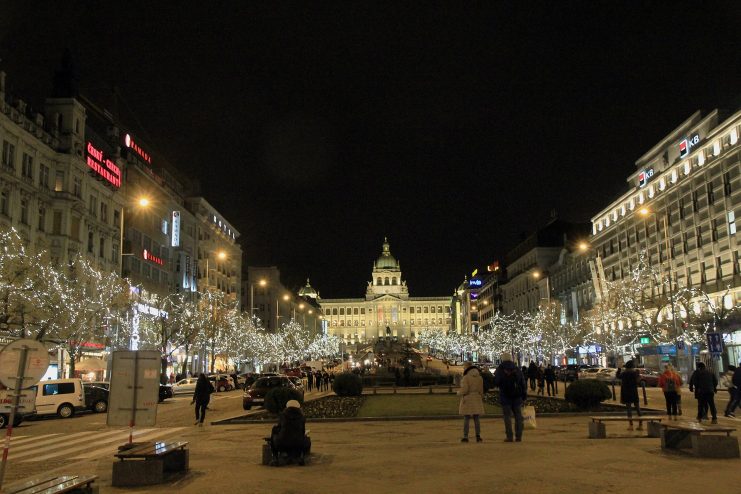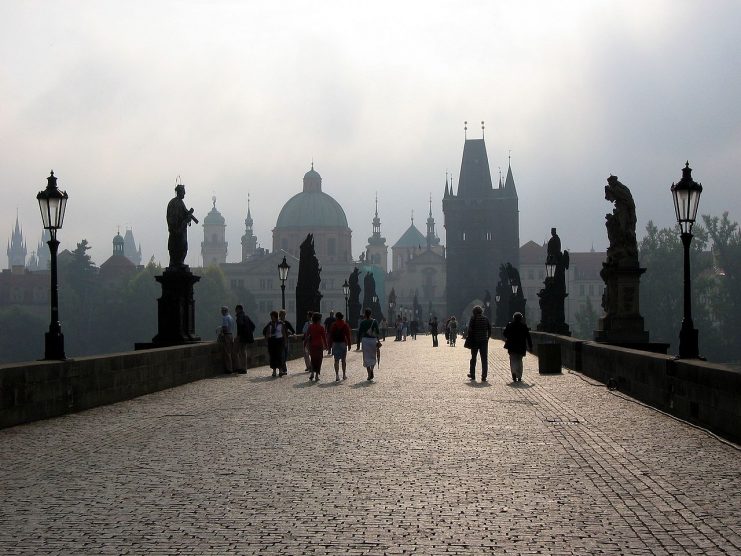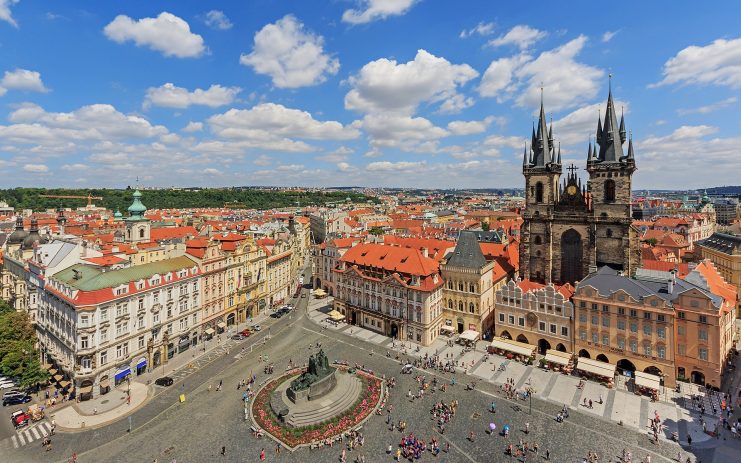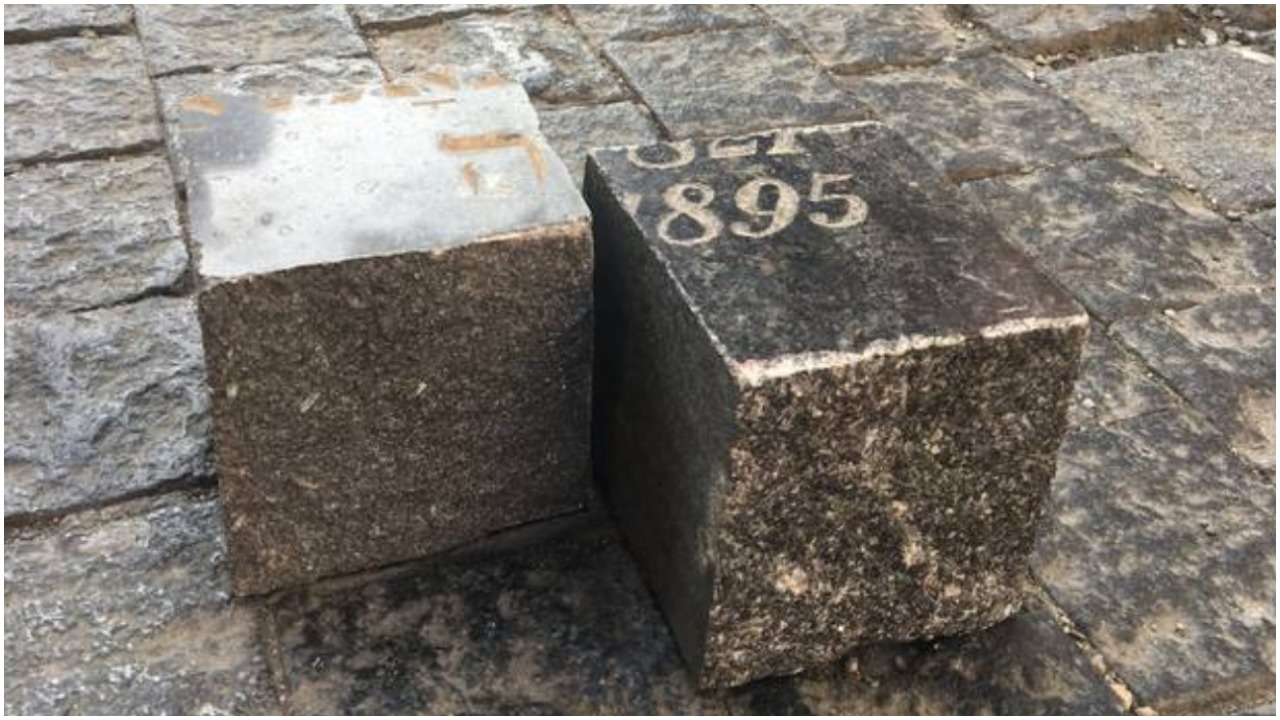Redevelopment work being undertaken in Prague has revealed a gruesome secret. Many of the paving stones that have been listed have been found to have been made initially from raided Jewish headstones.
This has confirmed speculation that the communist regime stole gravestones from synagogues and Jewish graveyards to manufacture cobblestones for building purposes.
Workers, busy uplifting the cobbles in Wenceslas Square, found that many of the cobbles when turned over revealed portions of Jewish scripts or parts of dates or names.

The a £10.6m facelift of this popular tourist destination started on 5th May in Wenceslas Square, which has been the setting for many political protests as well as many dramatic events in the history of the Czech Republic.
The Czech Republic was ruled by a communist regime for over forty years during the Cold War.
A senior official in the Prague rabbinate, Rabbi Chaim Kočí, was witness to the unveiling of the destroyed headstones. He watched as workers turned over stones that clearly showed the Hebrew letters, dates, and the Star of David.
Many stones were highly polished on the underside, another clear indication that they had been raided from cemeteries.

Leaders of the Jewish community in Prague said that these cobblestones proved that their suspicions that the communist authorities had stolen the stone in the 1980s for the highly publicized changes made to Wenceslas Square when motorized vehicles were banned from the area. It was made into a pedestrian arcade.
This project was completed in time for a visit by the then leader of the Soviet Union, Mikhail Gorbachev, that was held in 1987.
Leo Pavlate, the director of the Jewish Museum in Prague, was the first to raise the issue surrounding the origins of the paving stones.
He remembered finding two cobbles that bore markings of a headstone when the original paving of Wenceslas Square was being undertaken.

His comments prompted the city council in Prague to give the Jewish community permission to inspect the stones when they commenced with the latest development projects.
In Wenceslas Square, Rabbi Kočí, who was also in Wenceslas Square early in the morning to witness the tearing up of the cobbles, saying that they felt this was a victory for the Jewish people.
https://www.youtube.com/watch?v=Ca2VWfBGVIE
Up till now, the use of stone from synagogues and cemeteries was a rumor, but now it has been proven to be a fact.
He went on to say that it was not pleasant that the headstones of people who had died perhaps a century ago were lying broken on the floor, made into paving stones. Now, the historical record of what happened could be corrected.
It is impossible to identify where the headstones came from as they have been chopped into small pieces, and there is no way to piece them back together.
Communists were bigger anti-Semites than the Nazi’s, destroying more synagogues and Jewish cemeteries. Prague revamp reveals Jewish gravestones used to pave streets https://t.co/lUnG1A2X3d
— Taras Kuzio 🇬🇧🇮🇪🇪🇺🇺🇦 (@TarasKuzio) May 6, 2020
The stones seem to have been taken from many places, which makes identifying them even more difficult. One of the stones bears a date of 1877, a time when Prague was part of the Hapsburg empire. The most recent year found was in the 1970s, when Prague was ruled under a communist regime.
The Jewish community intends to gather all the stones together and build a memorial in the old Jewish cemetery, which is located in the Žižkov district in Prague.
Part of this cemetery was destroyed by the communist regime to build a public park. This park was, in turn, destroyed to build a television tower.
During the communist regime, there was a hostile policy toward the Jewish community. This officially sanctioned hostility meant that many synagogues and Jewish cemeteries fell into disrepair and were looted.
Military Tradition: Germany’s Problem With Its Past
The chairman of the Jewish Community in Prague, František Bányai, voiced the anger that they had against the communist regime.
He said, “More Jewish synagogues were destroyed in the era of the current Czech Republic during communist times than under the Nazis. It was because of their special approach to religion. Anti-Judaism was official policy, and all the Jewish committees were supervised and managed by control of the secret police. To be Jewish was negative from any point of view – but it was the same for the Christian church.”
